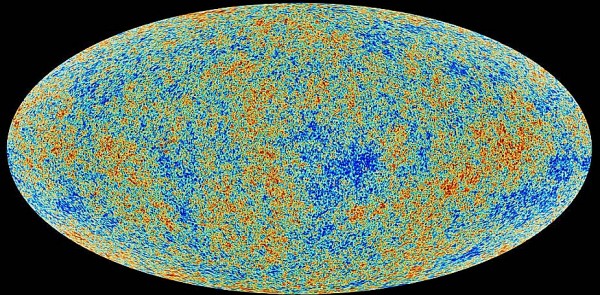The Milky Way Galaxy Resides in the Biggest Void in the Universe
| Arthur Dominic Villasanta | | Jun 07, 2017 07:20 PM EDT |
(Photo : NASA) Structures, including voids, in the Universe as shown by the Planck mission.
Yes, we (meaning our Earth, or solar system and our Milky Way galaxy) exist in the largest known void -- or "nothingness" -- in the entire Universe.
Recent studies have confirmed this once controversial theory suggested in 2013 by an observational study, which contended the Milky Way resides in a very large void. Recent research presented at a meeting of the American Astronomical Society, however, confirms these findings.
Like Us on Facebook
It also revealed the void containing the Milky Way is about seven times as large as the average void in the universe. This makes the void we exist in the largest void in the Universe known to science.
Scientists analyzing the structures of the Universe suggest the Milky Way is a void shaped like a sphere with a shell of increasing thickness made up of galaxies, stars and other matter. This void is estimated to have a diameter of 1 billion light years.
Voids, or more accurately, cosmic voids, are vast spaces between filaments (the largest-scale structures in the Universe), which contain very few or no galaxies. Voids typically have a diameter of 10 megaparsecs (Mpc) to 100 megaparsecs.
Voids have less than one-tenth of the average density of matter abundance that is considered typical for the observable Universe. They're vast, largely spherical regions with very low cosmic mean densities, up to 100 Mpc in diameter.
Voids were first discovered in 1978 in a pioneering study by Stephen Gregory and Laird A. Thompson at the Kitt Peak National Observatory.
"The new analysis shows that there are no current observational obstacles to the conclusion that the Milky Way resides in a very large void," said Amy Barger, University of Wisconsin-Madison astronomer.
The structure of our Universe can be broken down into two main structural components: voids and walls, or regions that contain the typical cosmic mean density of matter abundance.
Tagsmilky way galaxy, Universe, void, cosmic void, filaments, galaxies
©2015 Chinatopix All rights reserved. Do not reproduce without permission
EDITOR'S PICKS
-

Did the Trump administration just announce plans for a trade war with ‘hostile’ China and Russia?
-

US Senate passes Taiwan travel bill slammed by China
-

As Yan Sihong’s family grieves, here are other Chinese students who went missing abroad. Some have never been found
-

Beijing blasts Western critics who ‘smear China’ with the term sharp power
-

China Envoy Seeks to Defuse Tensions With U.S. as a Trade War Brews
-

Singapore's Deputy PM Provides Bitcoin Vote of Confidence Amid China's Blanket Bans
-

China warns investors over risks in overseas virtual currency trading
-

Chinese government most trustworthy: survey
-

Kashima Antlers On Course For Back-To-Back Titles
MOST POPULAR
LATEST NEWS
Zhou Yongkang: China's Former Security Chief Sentenced to Life in Prison

China's former Chief of the Ministry of Public Security, Zhou Yongkang, has been given a life sentence after he was found guilty of abusing his office, bribery and deliberately ... Full Article
TRENDING STORY

China Pork Prices Expected to Stabilize As The Supplies Recover

Elephone P9000 Smartphone is now on Sale on Amazon India

There's a Big Chance Cliffhangers Won't Still Be Resolved When Grey's Anatomy Season 13 Returns

Supreme Court Ruled on Samsung vs Apple Dispute for Patent Infringement

Microsoft Surface Pro 5 Rumors and Release Date: What is the Latest?













